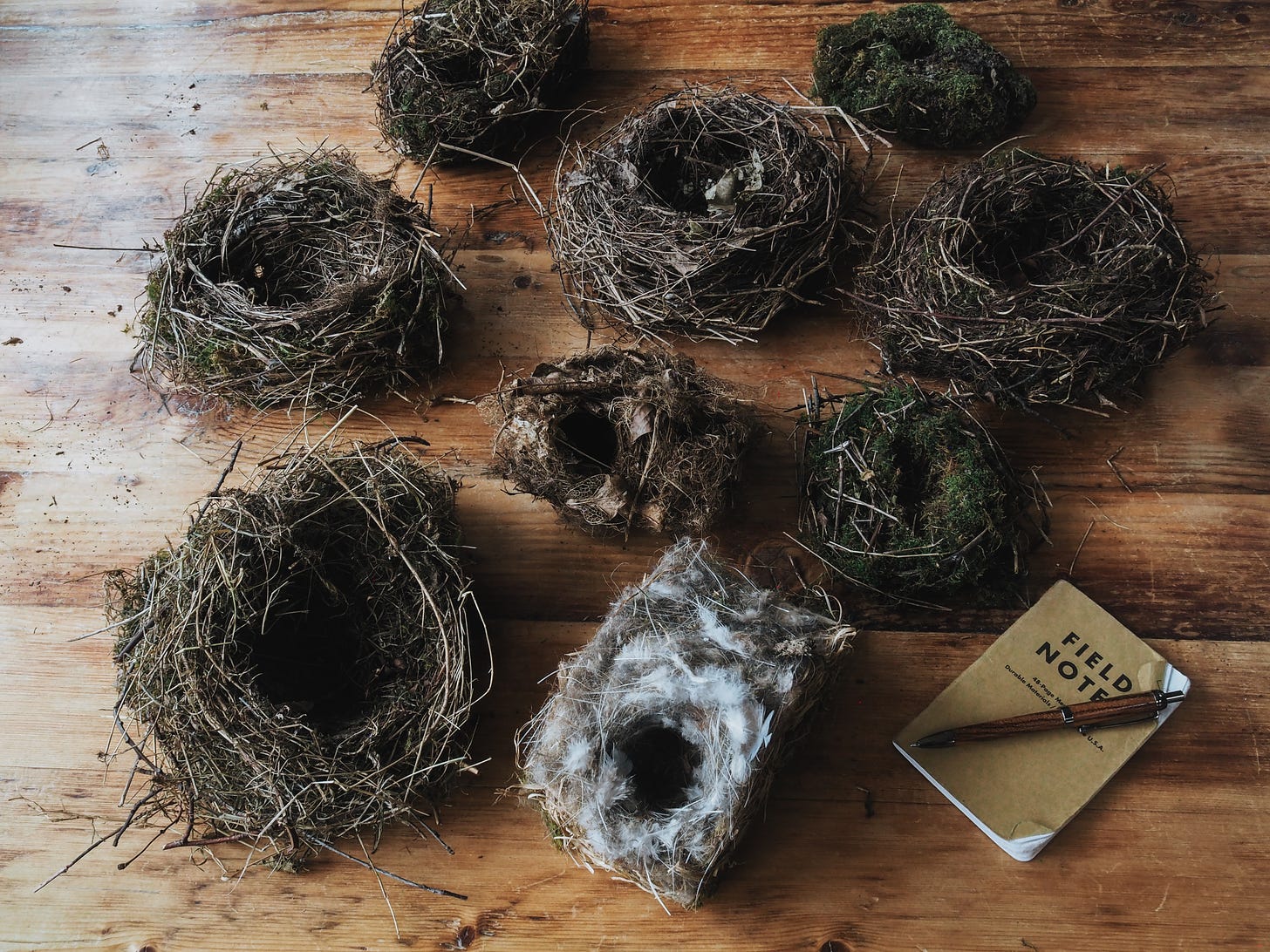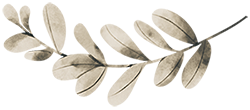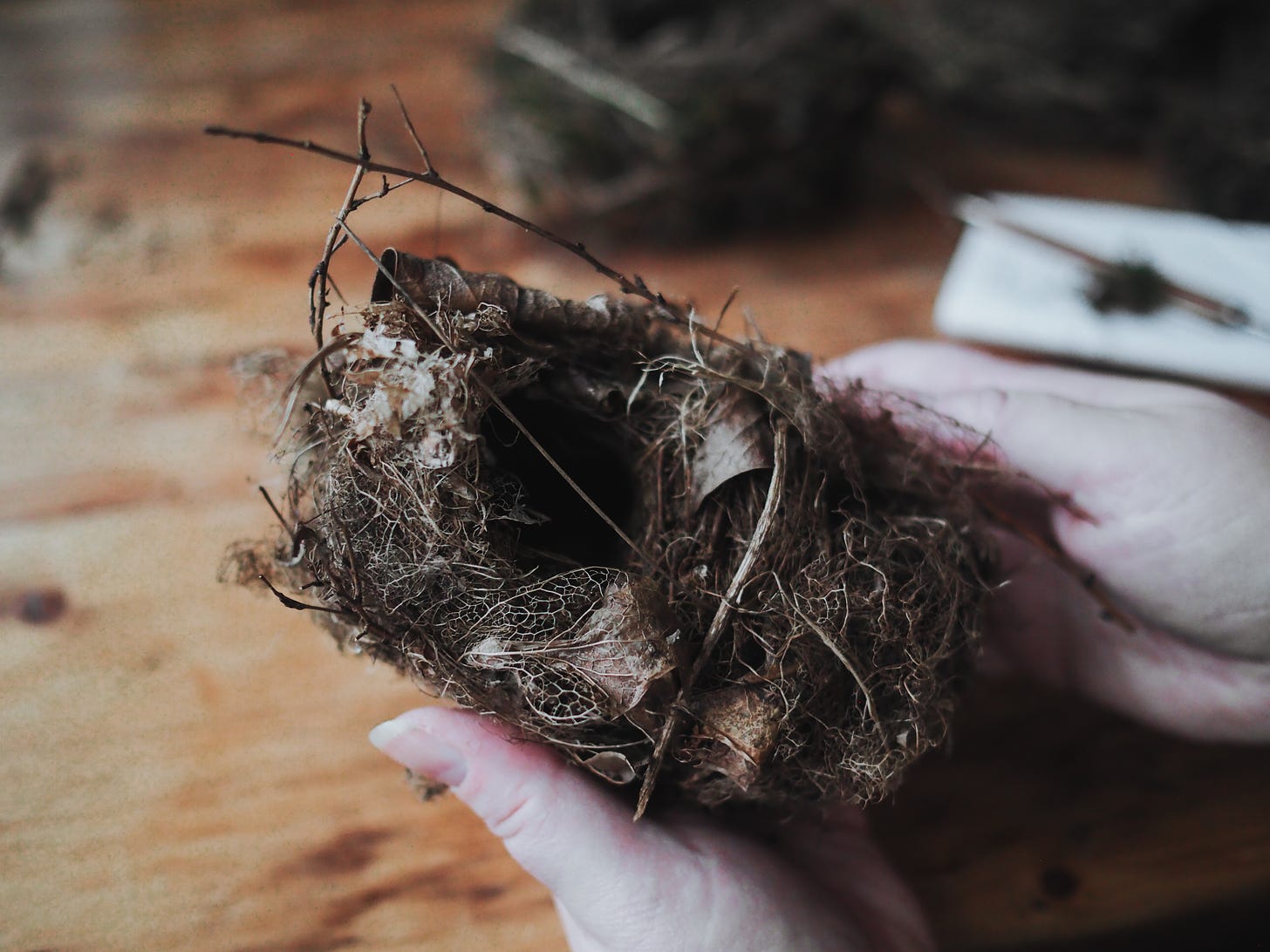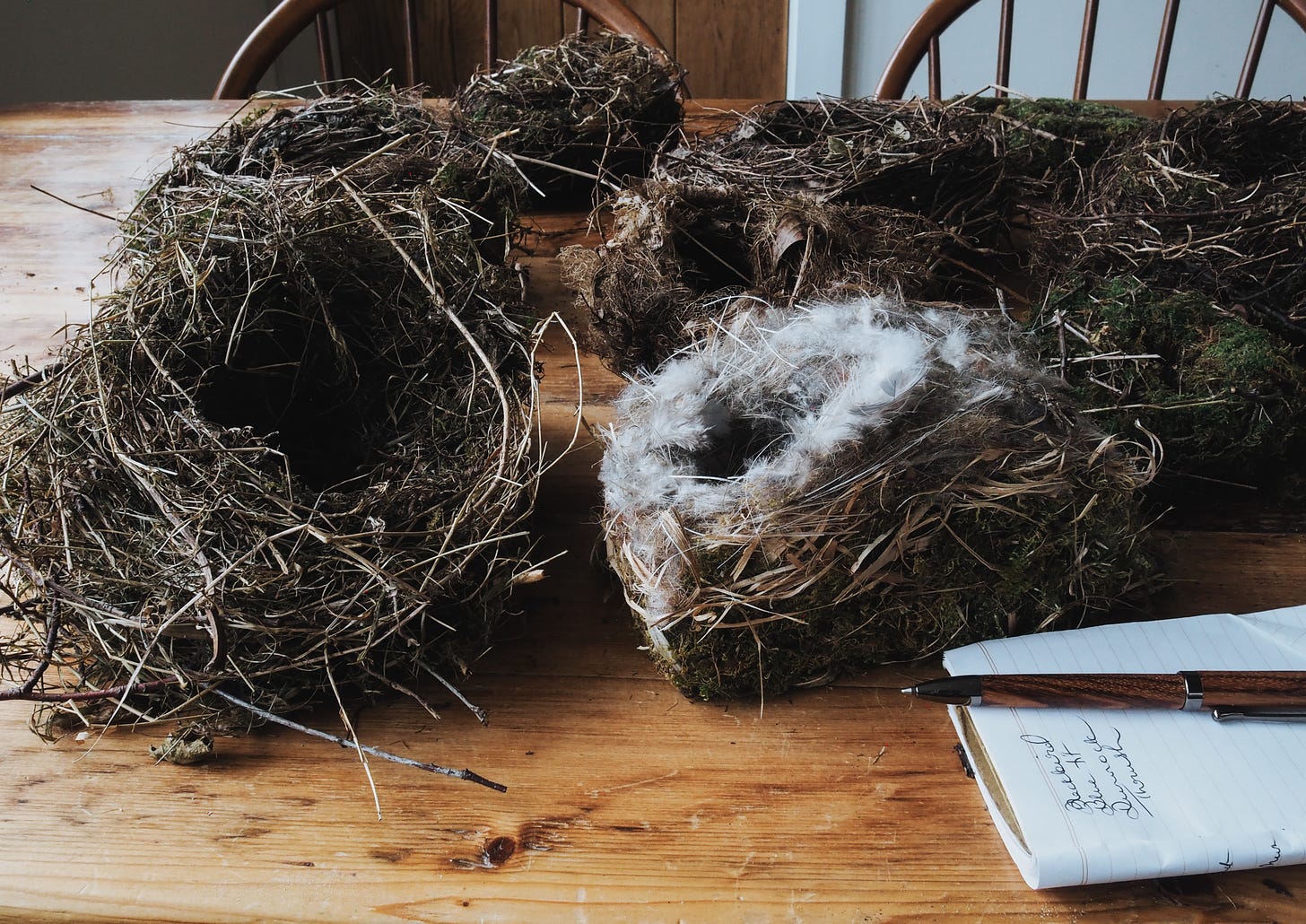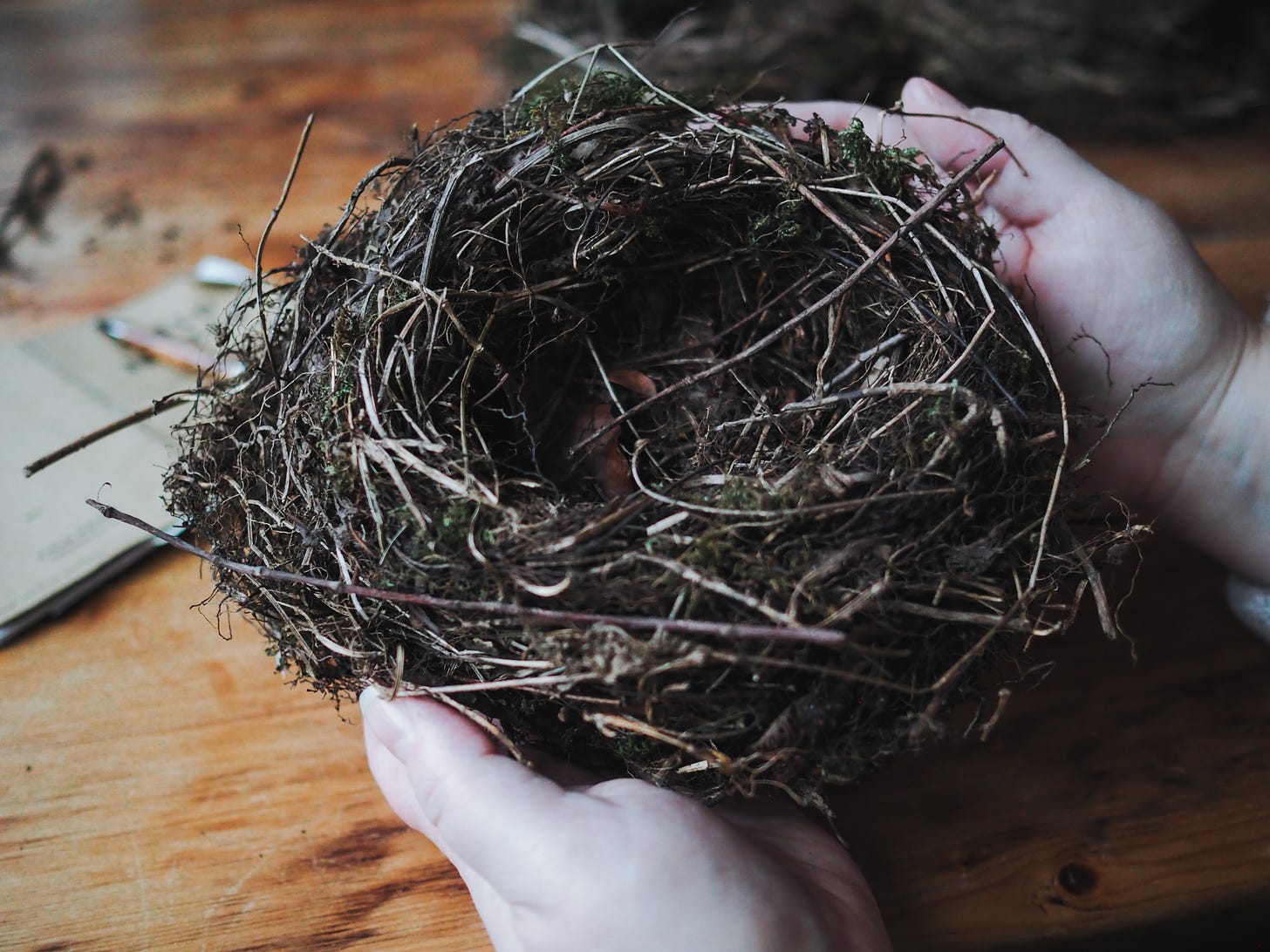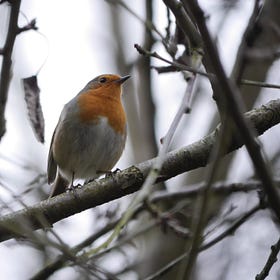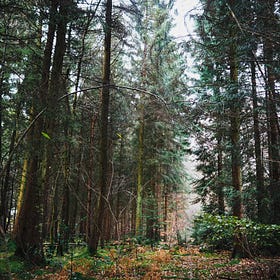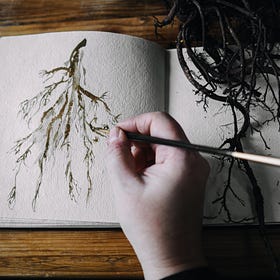I remember finding my first nest as a youngster. Walking home from the train station my gaze was directed at the ground, intently searching for tree seed pods and unusual pebbles. Instead I found the tiniest wisp of a nest, the size of my palm, sitting precariously in the angle where the road met the pavement. It was so unexpected and so out of place that it stopped me in my tracks. I knew it didn’t belong there, but I couldn’t see many trees or hedges nearby. It must have been blown a short distance by the wind because it was light enough to be carried even further, had I not picked it up and cupped it in my hand. Thoughts of seeds and stones temporarily vanished as this incredible woven vessel stole my attention, fully.
I’ve always been a collector. Mostly of natural history such as stones, feathers, seed casings, animal bones, and nests. I rarely talked about it growing up because fitting in was difficult enough and I definitely didn’t need another reason for being seen as a social pariah. Yet in my own private world these found objects were natural treasures to me. Labelled, archived and protected in old shoe boxes, I had my own mini museum.
Not much has changed since then. I still collect and I’m still breathless with awe when I come across a muntjac deer skull, a red kite feather, or an abandoned blackbird’s nest. Sometimes I search them out when I’m walking in the woods. Sometimes I come across them. Each has its own unique imprint, no two stones, feathers or bones ever the same. In my eyes they are objects of beauty – and none more so than birds nests. Out of all my collected items, they feel the most emotive.
I’m often asked why I collect birds nests. It’s a simple question with a complex answer. They are so much more than symbols of spring and new life.
To me nests embody the desire to make a safe space – to have a safe space. For as long as I can remember I have craved this safety within myself and in my own body. After three and a half decades of self-rejection and absorbing others’ rejection of me, very little has felt secure. It was during a psychotherapy session a few years ago that the idea of building something safe within came up. A place I could take with me wherever I went that didn’t depend on another person or an actual house. At the time it was such an alien concept, and it felt like a complete impossibility. Sometimes it still does. I would love to be able to tie it up all neatly now by saying that it worked and I have built that space. But as anyone who has been through any sort of therapeutic process will tell you, it’s not linear, nor is it as easy as ‘just doing it’.
I am always in the process of building that safe space, my inner nest. Finding a way of making something strong but light, able to hold all my stories, let the scars heal and also be resilient enough to weather life’s storms without falling apart. Perhaps this is a whole life’s work?
What I know now is that holding these precious pieces of ourselves requires a protective place. An internal home for our oddities and quirks, the tender, raw edges that have felt bruised by others but are no less worthy because of it.
With each nest that I find, I hold it in my hands and it reminds me of the continual work of building. The fragility of something made out of such perishable elements, held together with hope.
Please note, I only collect abandoned nests between 30 September and 31 January each year. Scroll to the bottom of this post for some other important nest facts.
NEST FACTS
A note about nesting birds and the (UK) law
All wild bird species, their eggs and nests are protected by law under the Wildlife & Countryside Act 1981.1 This means that it’s against the law to intentionally or recklessly (a) disturb any wild birds whilst they are building a nest or are in, on or near a nest containing eggs or young; or (b) disturb their dependent young.
This means that certain activities2 such as trimming or cutting trees, bushes, hedges and rough vegetation can’t be undertaken during breeding season.3
Most birds use their nests only once and will start fresh in the spring with a new nest.
In autumn, these dwellings will be abandoned, and will eventually break up and decay as winter sets in. Birds may come back to the same place (such as a tree or hedge) each year if they had a successful brood.
So why don’t birds reuse their nests? Nest reuse is often considered risky. For example there are nest predators who are able to remember earlier depredated nests, and they tend to revisit them, e.g., Corvids. Also, reused nests may provide a reduced quality of nest construction, particularly in adverse weather conditions. Additionally, there is a risk of parasites accumulating during a previous nesting cycle, which can significantly reduce the survival rate of newly hatched baby birds.4 This is why some birds build new nests for each brood.
Some birds reuse the nests of others, for example, buzzards can take over disused crows' nests, but most smaller wild birds will start again each spring. The male wren builds as many as 12 “draft" nests or “cock nests” in his breeding territory to help attract female partners. The female will then pick one nest and abandon the others.
You can remove nests as long as they're not being built or in use. If you're clearing out a nesting box after breeding season and you need to remove unhatched eggs from a nest that isn't currently being used, it's only legal for you to do this between 1 September and 31 January each year.5
FROM THE ARCHIVES
If you enjoyed this post, you may also enjoy these:
https://www.legislation.gov.uk/ukpga/1981/69/part/I/crossheading/protection-of-birds
https://www.rspb.org.uk/birds-and-wildlife/helping-birds-and-wildlife/birds-in-the-roof
https://www.gov.uk/guidance/wild-birds-protection-surveys-and-licences
https://bou.org.uk/blog-mero-nest-reuse-warblers/
https://www.rspca.org.uk/adviceandwelfare/wildlife/birds/nests/moving





